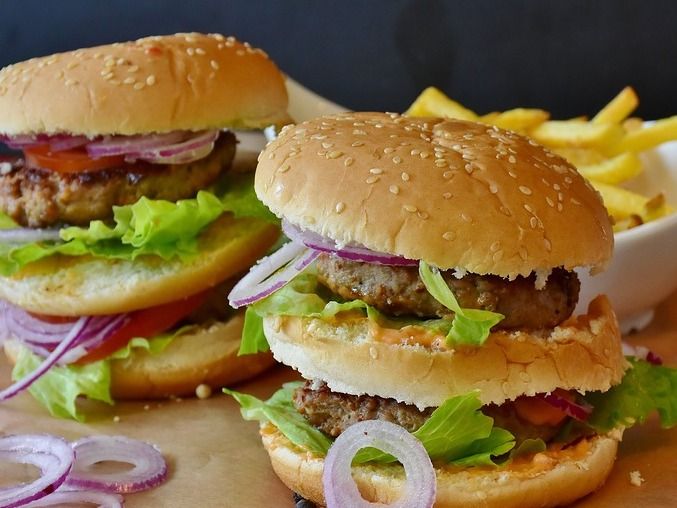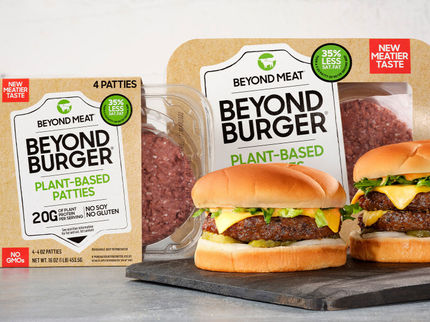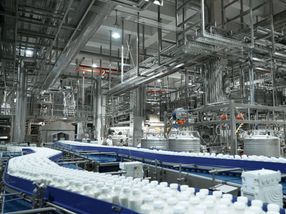Thought Bubble: Fast food evolution
As the Big Mac celebrates its 50th anniversary this month, Mintel’s global analysts assess how fast food has evolved over the last half-century across the US, the UK and Asia.

RitaE/ Pixabay
Amanda Topper, Associate Director, Foodservice Research, US:
50 years ago, fast food was all about offering simple food at an affordable price point. Today there is a stronger emphasis on food quality and variety. Diners are demanding higher quality ingredients like fresh beef (69%) and local ingredients (37%) when ordering burgers. Furthermore, 75% of diners agree QSR (quick service restaurant) food is better in quality. McDonald’s, for example, has committed to a switch to fresh beef in its Quarter Pounders, and has also trialled local limited time offers, including Gilroy Garlic Fries in the San Francisco Bay Area.
Fast food industry players are also incorporating more superfood ingredients and a variety of cuisine influences into menu items to keep up with the change of pace in other restaurant sectors. And we’re seeing a focus on customisation. Not only are QSRs offering expanded menu offerings to appeal to diners’ varying tastes, they are also allowing them to customise flavours and ingredients.
Trish Caddy, Foodservice Analyst, UK:
Fast food diners today still want to indulge in their favourite foods, but have become more health conscious since the 1960s. Nearly a third (32%) of diners say they’d like to see healthier meal alternatives at burger and chicken restaurants, while 31% would like to see a wider range of portion sizes. Fast food restaurants are catering to more health conscious consumers with many, for example, offering rice as a substitute for fries as well as options for smaller portion sizes.
Fast food brands have also been effective at extending into other popular categories such out of home hot drinks, appealing to more cost conscious consumers. Nearly a quarter (24%) of people have bought a hot drink from a fast food chain in the three months to October 2017, with younger Millennials and parents of under-16s the most likely groups to have done so.
Delon Wang, Manager of Trends, APAC:
Asia has always had a vibrant fast food sector in the form of hawkers selling cheap hassle-free food even before fast food chains entered the market. In fact, the novelty of Western fast food chains has today worn off, with consumers going back to traditional local food. This has spurred fast food chains to offer more flavour and ingredient choices akin to traditional food with a spin utilizing the chain’s specialty. Successful launches include the Nasi Lemak Burger in Singapore or the Rendang Burger in Indonesia.
As Asian consumers become wealthier and more health conscious, Western-style fast food diners want their fast food to be more healthy and offer more premium foods in addition to a quick meal. KFC China, for example, responded to this by debuting its healthy concept KFC Pro, which serves salads and paninis with proteins like shrimp, smoked salmon and grilled (not fried) chicken.
What does the future of fast food hold?
In the US:
As diners continue to be surrounded with convenient dining options, value is going to become more important than ever, signaling the need for QSRs to prove not only that they offer the best value, but also a high quality meal.
Technology will continue to evolve in the restaurant space, as we expect to see more kiosk and mobile ordering, and delivery improvements. More than half of diners (51%) agree QSRs should offer mobile apps for ordering food, and more than one in five (15%) want to see more kiosk ordering. Yum Brands recently partnered with Grubhub, while McDonald’s offers delivery via UberEATS. Online ordering and delivery can help operators reach a wider audience of diners, as well as reach diners across multiple dayparts, including the less popular afternoon and evening occasions.
In the UK:
With more people travelling abroad, they’re being exposed to new cuisines and this will have a big impact on future dining experience. Two-thirds (66%) of eat-in/takeaway consumers say they look for food they’ve tried while on holiday, particularly those aged 28-37 (74%). Fast food brands can tap into this trend, like Byron Burger, for example, which launched a Korean-themed menu in April 2017.
As nearly six in ten diners say they’re eating more vegetables than they did a year ago, we’ll see fast food operators offer more flexitarian options. This is especially appealing to young diners, who are driving the boom in flexitarianism.
In Asia:
Accessibility and speed will still take precedence due to traffic issues and a faster pace of life. In fact, the top concerns for Chinese fast food diners today are “waiting too long to order food” (39%) and “waiting too long to get food” (38%).
Some fast food brands have already tapped into this by providing pre-order services through mobile apps, self-order machines in-store, and cashless mobile and facial payment. Mintel expects more technological innovations to be applied to the fast food sector and help guarantee a more pleasant dining experience.
Looking ahead, healthier options will appeal to more consumers as they are not easily accessible from local stall options. We’ll see vegan and natural ingredients experience a stronger penetration in the fast food market in the years to come.
































































